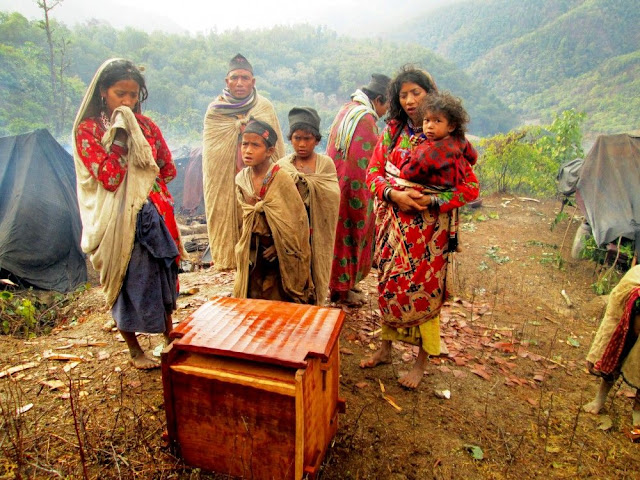Raute : Nomads of western Nepal (Photo feature)
Raute People
They gather wild forest tubers, fruits, and greens on a regular basis. To obtain grain, iron, cloth, and jewelry, they carve wooden bowls and boxes to trade for goods from local farmers. They do not sell other forest products, bushmeat, or forest medicinal plants.


Raute are the nomadic Tibeto-Burman ethnic group officially recognized by the Government of Nepal. They are known for subsistence hunting of langur and macaque monkeys. They eat monkey meat.
They gather wild forest tubers, fruits, and greens on a regular basis. To obtain grain, iron, cloth, and jewelry, they carve wooden bowls and boxes to trade for goods from local farmers. They do not sell other forest products, bushmeat, or forest medicinal plants.


Their population is estimated at about 650 persons living in small settlements in the Karnali and Makahali (Kali) watershed regions of western Nepal. Most have been forcibly settled by the government of Nepal but there are about 150 nomadic Raute.
They change there placement or they leave there place after death of any member of group.
Raute language
The Raute language is classified as Tibeto-Burman. It is called "Raute" in most studies and sometimes "Khamci," meaning "our talk" in a few other studies. It is closely related to the language spoken by two related ethnic groups, the Ban Raji ("Little Rulers of the Forest") and Raji ("Little Rulers") of the same region (Fortier and Rastogi 2004). The closest well-documented language to Raute known at the present time is Chepang, spoken by an ethnic group of west-central Nepal who also have been hunter-gatherers until the current generation.
Rautes emphasize that they wish to remain full-time foragers and not assimilate into the surrounding farming population.
(Photos: Prakash Adhikari/ Kantipur)








Comments
Post a Comment